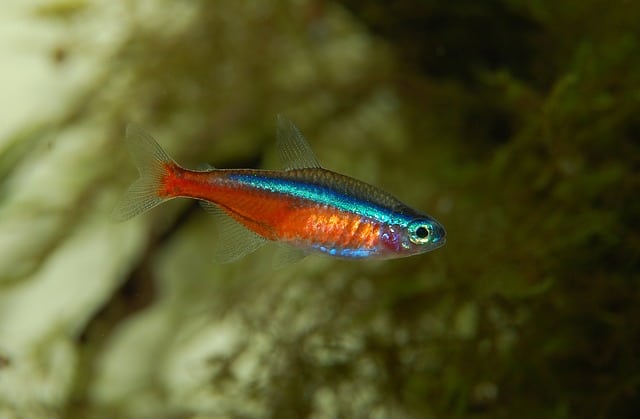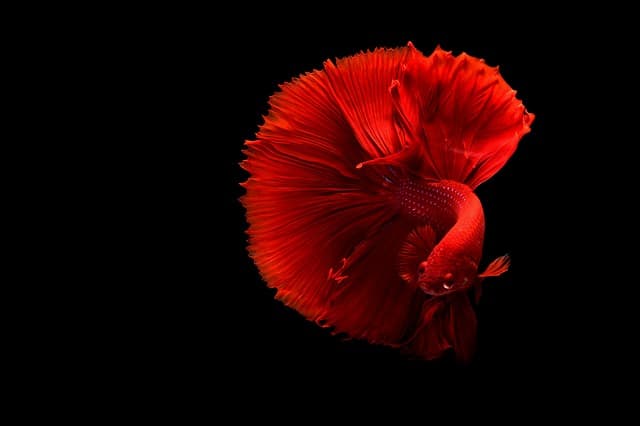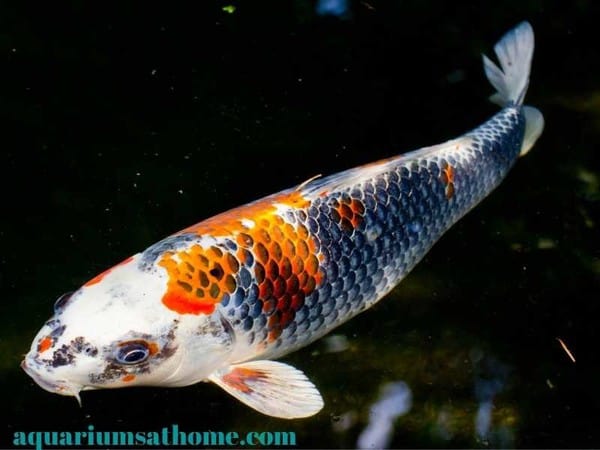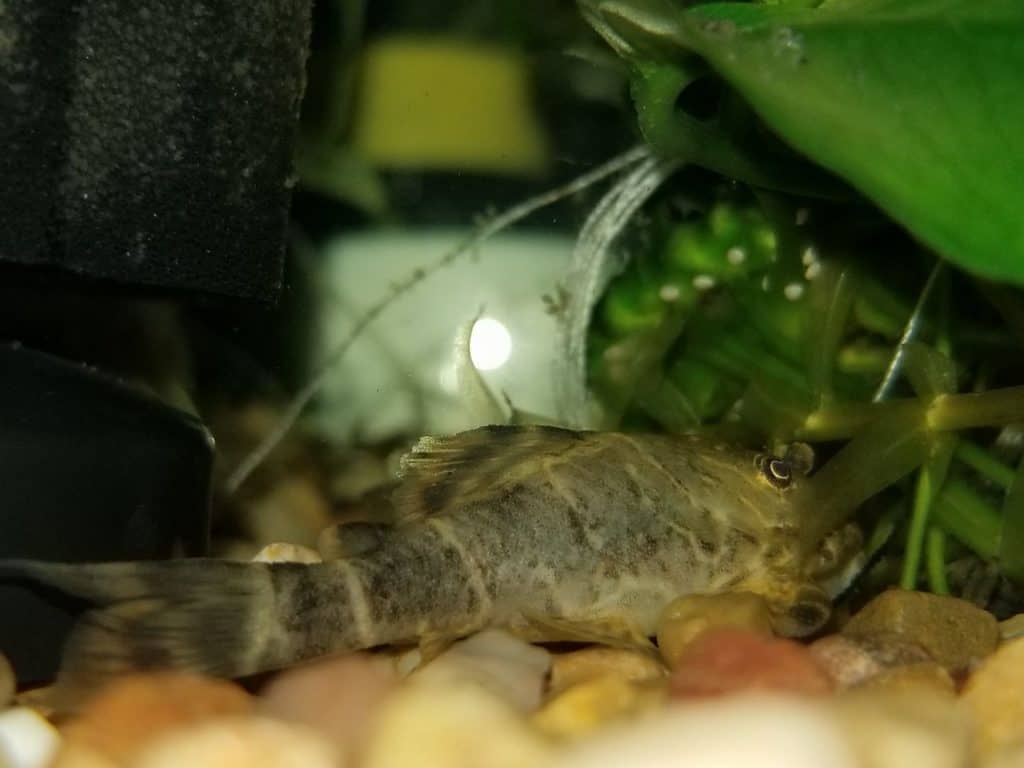If you’re looking for an interesting, fun and easy freshwater catfish to care for, then maybe you should consider getting a bumblebee catfish.
This tropical fish is fun to watch because of its appearance and personality. It’s not hard to take care of and has a peaceful temperament. It’s no wonder that more and more aquarium owners are becoming interested in keeping these beautiful catfish.
Bumblebee cats are hardy too, which makes them perfect for owners who want a low-maintenance pet.
We’ll go through everything you need to know to take care of your bumblebee catfish. You’ll learn how big they grow, which tank mates they prefer, how to feed them, and more!
If you’re ready to learn more about this interesting creature, then let’s get started with our complete care guide about the South American bumblebee catfish.
Natural Habitat
To start off this care-guide, you first need to learn where these fish come from. This helps you to better understand what is required to keep them happy and healthy in a fish tank.
The Bumblebee Catfish is native to South America, which is why you’ll find a lot of people in the hobby calling them South American bumblebee catfish.
This species first originated in Colombia and Venezuela but as its population grew, it spread out to adjoining countries such as Brazil, Guyana, Ecuador, and Peru.
In nature, they live in freshwater habitats like rivers, streams, and lakes, particularly those with fast flowing water. The bonus about fast moving water is it helps keep the environment clean and oxygen levels high.
This bottom-dwelling fish likes to hide in rock piles and debris, making it hard for predators to see them. They stick close to aquatic plants which helps them stay hidden and safe as well.
South America has a warm, tropical climate, which is perfect for Bumblebee Catfish. A warm climate means warmer waters.
With the waters in this region being fast moving, having a lot of rain and typically highly vegetated, the PH level ends up being neutral.
To keep your catfish healthy and happy, you obviously need to recreate these conditions as best as possible.
Appearance and Size
I really love the distinctive appearance of the Bumblebee Catfish. Its name tells you everything you need to know about its appearance.
The coloration on this fish’s body is yellow and black. These colors are distributed across several thick asymmetrical sections, looking like the black and yellow bands of a bumblebee.
Their heads are usually black, but the colors alternate down their bodies from there.
The average bumblebee catfish length is 3 inches. It varies depending on the environment in which they were raised and the quality of care they received as juveniles. That said, it’s incredibly rare for these fish to grow any longer than this, even if they receive the best care.
It has a very thin, spiky dorsal fin that takes up little space on its back. They have a black line running down the middle of this fish’s dorsal fin from front to back.
Their caudal fins are slightly forked and have a similar band of coloration. The space at the bottom of the tail fin is usually black.
Bumblebee catfish have large, splayed ventral’s that help them easily navigate their environment. You can only imagine that as a bottom-feeding fish, this is an incredibly useful feature.
This type of fish has a body shape like that of a traditional catfish. Bumblebee catfishes have long cylindrical bodies that taper down a bit before the tail fin.
Behavior and Temperament
Once you own a bumblebee catfish, you’ll love how easy they are to care for. A lot of this has to do with their temperament.
The bumblebee catfish is a nocturnal fish and is very easy going. They’re a very ‘chill’ fish. The fact that they’re nocturnal means they might not be out very much during the day or when bright lights are on.
You can encourage them to come out more often during the day by setting up your tank with lots of ledges and places they can hide in plain sight.
If you use driftwood and or rocks, you should be able to place everything so they can rest in a covered area but exposed to you on the outside of the tank.
If you place driftwood along the side of the glass, you might get to view your catfish digging and hiding in the substrate.
Because of their friendly and calm nature, they make an excellent choice for a community fish.
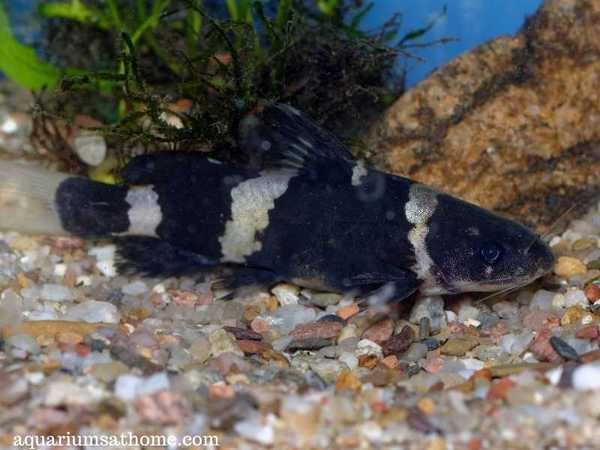
Fish Tank Size, Setup and Water Parameters
A 20-gallon tank minimum is the recommended tank size for a fully grown bumblebee catfish. I find nocturnal fish don’t require huge tanks as they don’t move about as much as other fish. In fact, I would argue that nocturnal fish prefer smaller tanks as it feels safer to them.
That said, 20-gallons is not a small tank for a 3″ fish.
If you want to be able to keep more than one of these fish together in an aquarium, you’ll need more room. If your catfish are juveniles, then having more than one in a 20-gallon is fine. If they’re adults, I wouldn’t have more than 3 in a 30-gallon.
Bumblebee catfish are hardy and can thrive in a range of water conditions in their natural environment. This doesn’t mean you shouldn’t do your best to have them in their preferred environment. With any fish, you always want to try to replicate their natural habitat as closely as possible.
Here are some water conditions you should be striving for.
Average water temperature should be in the range of 70°F and 77° Fahrenheit (21 to 25 Celsius).
The PH levels should be in the range of 6.5 to 7.5. This means that this fish species prefers a neutral water. You should test your tap water for its pH level and adjust accordingly. For my tanks, I mix my tap water with RO water to get the desired levels.
The water hardness should be in the range of 8 to 12 dGH. If your water has a lot of calcium or magnesium, you’ll have harder water.
When you first start running a new tank and are adding fish, it’s good to be testing for pH levels and hardness. After a couple of months, if you make the effort to learn what your fish need and what you’re supplying them with, you shouldn’t need to test as often.
Perform water changes more frequently for newer tank setups. As your tank matures and beneficial bacteria builds, you won’t need to do as many changes. For new tanks – once every 10 to 14 days and older than 6 months – once a month is good enough.
What To Put in The Fish Tank?
The bodies of water these catfish are used to will have lots of fallen tree branches (driftwood) and plants growing everywhere. Along shorelines, you’ll find nooks and crannies where small fish can hide.
The best thing to do for your bumblebee catfish is to replicate their natural habitat. A well planted tank with some driftwood and maybe a cave or tube for them to hide in would be perfect.
A heavily planted tank will also be beneficial to the softness of the water and the amount of oxygen and nitrates in the tank.
You can use rocks and pile them up, making all sorts of fun hiding places for your fish.
For live plants, there are many options from Anubis to java ferns, amazon swords, Vallisneria, baby tears, red flame sword among so many other options.
With plants and nocturnal fish, the idea is to give the fish cover on the bottom of the tank along with protection from plants that grow tall and some that’ll float on the top of the tank. This way, the fish will feel safer and are more likely to come out when its not dark.
Don’t forget that these fish are used to flowing rivers so make sure to have a powerful filtration system and (if you can) a small power head to flow through the middle of the tank. This’ll also help feces, excess food and decaying plant matter be moved along to the filter intake.
Diet
Bumblebee catfish are omnivores. This means they should be fed a varied diet of both plant-and meat-based foods to survive.
They’re bottom dwellers and feeders, so it only makes sense that they spend most of their lives on the bottom of the tank scouring for food. They don’t care what they eat whether it’s larvae, plants, insects, bloodworms, fish flakes or pellets. This makes it’s easy to provide a mixed and well-balanced diet to them.
Before venturing out to purchase insects and larvae, just start with high-quality pellet or flake food. After the fish are accustomed to the tank, you can then introduce both frozen and live foods in their meals.
Keeping their diet primarily flakes and pellets with supplemental feedings of the other options I’ve mentioned will ensure they have a nutritionally balanced diet and don’t get fat.
Average Lifespan
Bumblebee catfish can live an average of 5 years in the wild. In captivity, they’ll live close to that timeline as well if properly maintained.
It’s all about how they are cared for and, of course, how old they are when you purchase them.
Hardy fish can tolerate imperfect conditions for longer than weaker fish, however, it’ll impact their lifespan.
As always, I recommend taking proper care of the tank and providing the proper food and then and only then can you expect your pet fish to live a long healthy life.
Tank Mates
When it comes to bumblebee catfish tank mates, there are a lot of viable options. Because they’re very hardy and easygoing, they’re perfect not only for beginners but for a community tank.
The list would be long if I tried to list every single compatible fish. A rule of thumb when selecting tank mates is to ensure the fish are larger than your catfish’s mouth. Catfish will eat small fish if they get the chance.
Pro tip: Remember that catfish are nocturnal bottom dwellers. I know other sites will recommend fish such as cory catfish, rainbow sharks and various types of plecos. I don’t recommend them when keeping nocturnal bottom dwelling fish or you won’t see them very often if at all.
In random order, here are fish I’d suggest keeping with this species:
- Platies
- Gouramis
- Barbs
- Larger Tetras
- Mollies
- Boesemani Rainbow fish
- Rasboras
- Kribensis
- Blue Rams
- Angelfish
- Killifish
The list can go on and on. I’ll stop here, though. This should give you a very good idea on what else to stock your tank with.
Pro tip: Select fish that prefer a neutral pH for water when searching for tankmates.
Breeding Bumblebee Catfish
Breeding these fish in your fish tank will be next to impossible. Unless you live in an area where you can use the soft water right from their natural habitat, you’re not going to have much luck.
Breeding is possible in captivity but it’s typically at fish farms in South America or the Southern United States.
I wouldn’t even try to breed these fish. That’s my recommendation.
Common Diseases
One of the great benefits of bumblebee catfish (and other fish) is their durability and hardiness. They aren’t prone to any specific disease or illness, compared to other kinds of fish.
They can still get sick like any other fish. The most likely disease they will catch is Ich. Ich is a parasite that shows up as white spots and spreads quickly.
The good thing is, however, ich is easy to prevent. If you’re providing good bumblebee catfish care and making sure the water quality in the tank is stellar, infections are unlikely to occur. Stay consistent about maintaining the health of their aquatic envrionment and these fish will be healthy for a long time!
Bumblebee Catfish Cost
The cost to purchase these fish will vary, depending on where you’re located. If you live in the southern USA, you can easily pick them up for $6.00 to $10.00.
Conversely, with the option of now being able to order aquarium fish online, you could probably buy them for the above price, but you’ll have to add shipping.
If you’re like me and live in the middle of the country as far away from a s shoreline as possible, your prices will be higher.
All in all, a very affordable fish, considering how unique they are.
Special Recommendations for Bumblebee Catfish
It’s already been mentioned above in the tank setup section regarding the importance of having hiding places and lots of plants.
Other than having the water’s pH around 7.0 and not having fish smaller than your catfish’s mouth, there really isn’t anything to recommend.
Final Thoughts
Bumblebee catfish are hardy and easy to care for. With their peaceful temperament, it’s easy for this fish to be added to a community aquarium.
Some people might not enjoy nocturnal fish for the obvious reasons of not seeing the fish when the bright lights are on. So, maybe these fish aren’t for you. I do know, however, that if you give them a chance, you’ll not regret having one.
These catfish are unique, beautiful, interesting, and just a treat to watch and care for. If you’re looking for a fish or two that will stay at the bottom of the tank, then I really think you should consider bumblebee catfish.
Thanks for reading – good luck with your aquarium hobby!
Recommended Posts
Pictus Catfish Care and Tank Setup (Tank Mates, Breeding, Behaviour)
Ghost Catfish Care Guide: Tank Setup, Tankmates, Breeding, Diet



